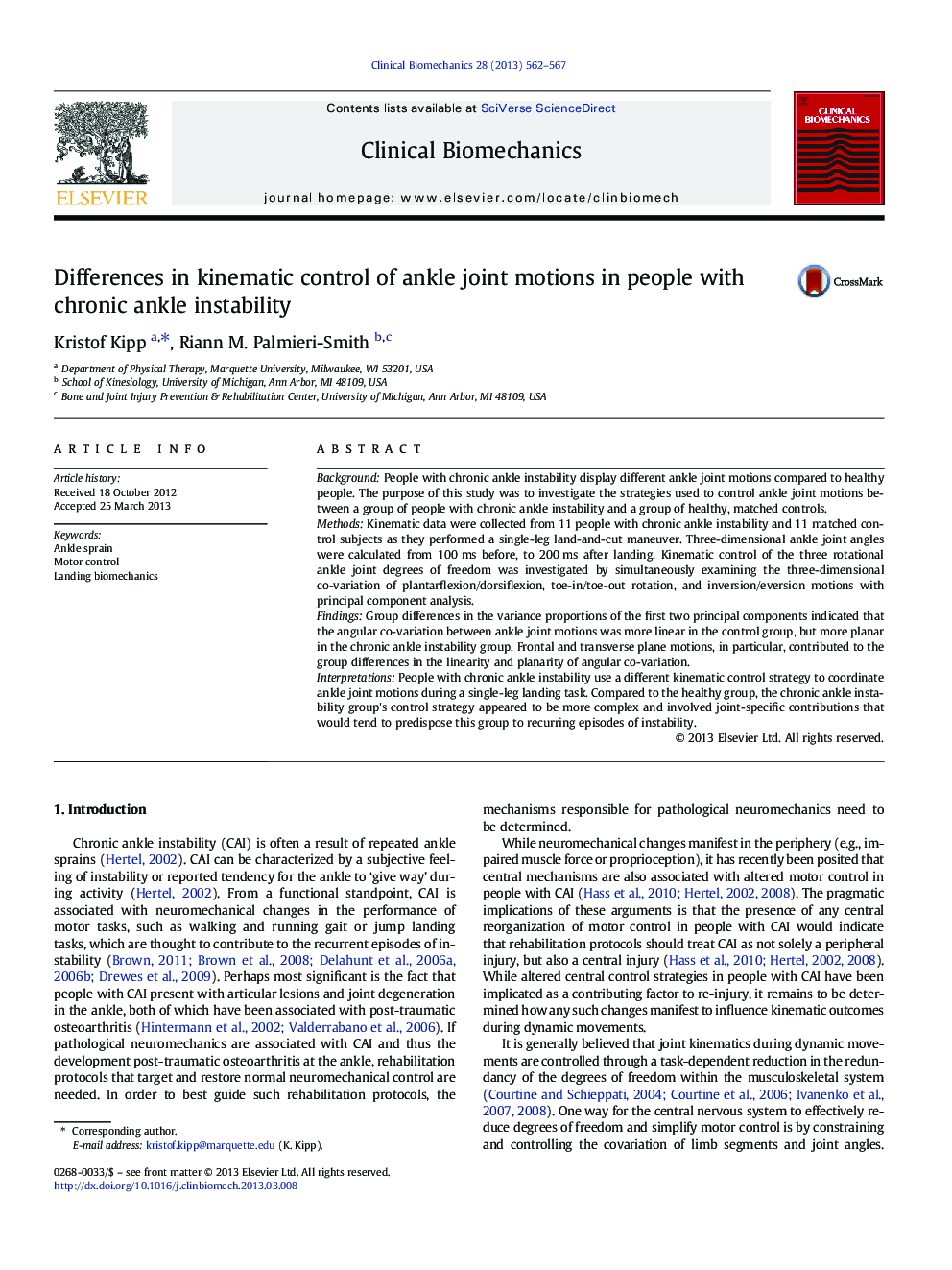| Article ID | Journal | Published Year | Pages | File Type |
|---|---|---|---|---|
| 4050705 | Clinical Biomechanics | 2013 | 6 Pages |
BackgroundPeople with chronic ankle instability display different ankle joint motions compared to healthy people. The purpose of this study was to investigate the strategies used to control ankle joint motions between a group of people with chronic ankle instability and a group of healthy, matched controls.MethodsKinematic data were collected from 11 people with chronic ankle instability and 11 matched control subjects as they performed a single-leg land-and-cut maneuver. Three-dimensional ankle joint angles were calculated from 100 ms before, to 200 ms after landing. Kinematic control of the three rotational ankle joint degrees of freedom was investigated by simultaneously examining the three-dimensional co-variation of plantarflexion/dorsiflexion, toe-in/toe-out rotation, and inversion/eversion motions with principal component analysis.FindingsGroup differences in the variance proportions of the first two principal components indicated that the angular co-variation between ankle joint motions was more linear in the control group, but more planar in the chronic ankle instability group. Frontal and transverse plane motions, in particular, contributed to the group differences in the linearity and planarity of angular co-variation.InterpretationsPeople with chronic ankle instability use a different kinematic control strategy to coordinate ankle joint motions during a single-leg landing task. Compared to the healthy group, the chronic ankle instability group's control strategy appeared to be more complex and involved joint-specific contributions that would tend to predispose this group to recurring episodes of instability.
